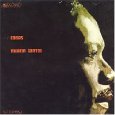Artists You Should Know: Moacir Santos
A few years ago while I was consulting for the Los Angeles Philharmonic, I proposed a memorial show to celebrate the music of Moacir Santos. Moacir who? The Brazilian composer had died a few months earlier. He had lived in LA for 40 years yet most people never knew who he was.
It’s doubtful that the show would have sold that many tickets, and Disney Hall is a big venue, with over 2000 seats.
But you can bet that all the best musicians in town would have been excited to play on the bill, probably for nothing, and the rest of LA’s musicians—and probably others from around the U.S.—would have been in the audience to celebrate this unsung hero from Brazil. He taught musicians like Baden Powell, Sergio Mendes, Nara Leão, Roberto Menescal, and other top stars of the new style called bossa nova.
He was born in the northeastern Brazilian state of Pernambuco, orphaned at an early age, after which his adoptive parents gave him music lessons. He learned the baritone sax and started composing. He later ran away from home and bounced around Pernambuco and finally wound up in 1948 in Rio de Janeiro, where he landed a job with the prestigious Rádio Nacional do Brasil.
He did some soundtrack work in Brazil, including “Amor no Pacifico” (Love in the Pacific), a pirate movie that got him some attention in Hollywood as an up-and-coming film composer.
He moved to Pasadena in 1967 and promptly disappeared. His later Hollywood soundtracks were mostly uncredited. Only a 1985 film, a b-movie called “Final Justice” got official soundtrack credit.
My favorite album happens to be his masterpiece: Coisas, from 1965. Santos called his songs “Coisas” (“things”) because, like many jazz musicians, he didn’t know how to name his songs and found the naming process kind of silly. (Joe Farrell once told me when I asked him about the name of one of his song on a CTI record (“November 68th) that he didn’t know what it meant, that Creed Taylor, the producer, just named all the songs). Coisas is made up of short tracks that are lapidary perfection, mixing gorgeous melodies, afro-brazilian elements, marching songs, and jazz syncopation. Its writing is methodical and precise, and it swing will beguile you. You should start here to appreciate this little-known Brazilian maestro.
Here’s a youtube clip of some music and images.
Audio clip: Adobe Flash Player (version 9 or above) is required to play this audio clip. Download the latest version here. You also need to have JavaScript enabled in your browser.

Check out the beautiful song “Coisa #9” from the 1965 album above.
← BACK
